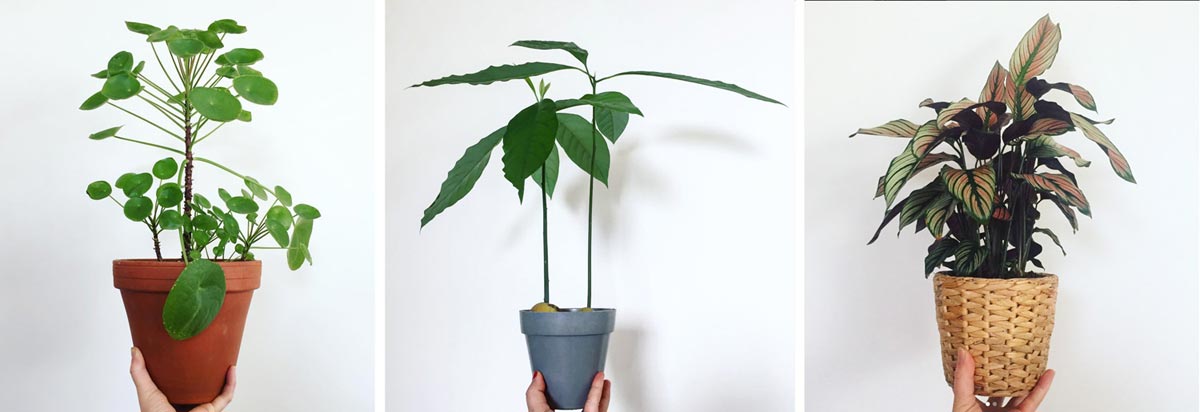Image by Deanna @habitpattern.sf whose beautiful plant filled home I just love!
Like many people, I adore plants, quite simply because green has always been my favourite colour and plants can totally change the feel of a room. Unfortunately I have struggled to keep many a house plant happy - big, well established Monstera’s have turned brown within weeks and the oh-so-easy-to-keep peace lily was drooping after days. For years I channeled my plant love into creating miniature growing kits that were super easy to grow and keep, but lets be honest, they don’t quite have the same impact as a beautifully tall Dracaena plant!
I’ve now started to take plant care more seriously, and what I’ve learnt is no plant will thrive without attention. There are no shortcuts, but after years of searching for ‘easy to care for house plants’ and ‘why is my houseplant dying’ searches, I'm sharing my top tips on how to care for your houseplants as believe me, I’ve done a enough trial and error for most people.
Tips on how to look after your house plants
House plant images from my favourite plant based instagram feed @planthoarder_ by Siebeke Asselbergs. Check it out for lots of plant loving inspiration!
1. Before you buy
A simple rule. Know your plant and the space you want it to live in. So if you want a plant for your bathroom, buy plants that are suitable for a humid (and often low light) environment. Be aware of how much sunlight a room gets and look for plants that work for that room.
2. When to water
Over or under watering is one of the main causes to leaves turning brown / yellow and the environment, season, temperature will affect how much water your plant needs. As a general rule I now water most of my plants only when the soil is dry. Push your finger into the soil to check it is not damp then give it a good water until the soil is moist, but not soaking (you don’t want to drown the poor thing!). Many people suggest rainwater over tap water (with the uk climate, this should be easy enough to get hold of!)
Be mindful of the type of plant pot you are using. For example, a terracotta plant pot is more porous so it will retain more moisture than a glazed ceramic or plastic pot. I once repotted my Monstera into a clay pot but it was never happy - Monsteras really dislike their roots being wet and after moving it around to different rooms, changing the watering frequency, giving it more light…then less light….eventually I changed the large clay pot, and it was forever thankful.
If you can, choose one day a week (twice in summer) to routinely check and water your plants. It takes a few minutes and means your plant gang will never be neglected.
3. Soil Aeration
What? Yep, plants love to breath! Often the soil of the plant can get impacted and the roots start to suffocate. To aerate the soil, gently poke a chopstick or pencil into the soil. This will help oxygenate the soil as well as helping the water sink through evenly.
4. Dust and Mist
I was slow on the uptake to dust, always thinking it was too time consuming but it’s really worth the effort! Gently wiping the leaves with a damp sponge will have your plants looking shiny and healthy in no time whilst also allowing them to breathe more easily. Using a little spray bottle for the plants that don’t like much water (succulents or some ferns) will ensure they are not overwatered.
5. Attend and Rotate
Whilst attending to your plants, occasionally give them a closer inspection to look out for pests or problems as it’s much easier to resolve these issues early on! Rotate your plants to help maintain good growth and avoid them becoming lopsided by straining themselves towards the light.
6.Problem Solving
Brown leaves, yellow leaves, drooping leaves? So many things can affect the happiness of a plant and it’s a fine balance to getting it right. Gently adjusting the environment, light and water dosage should help most plants find their happy place but when they are still showing little improvement, I’ve found some help through these articles:
- What’s wrong with my Plants? I must have asked this hundred times over! Check out A Pair & A Spare which has helpful illustrations to identity problems.
- This table is quite handy which lists potential pest and disease problems.

